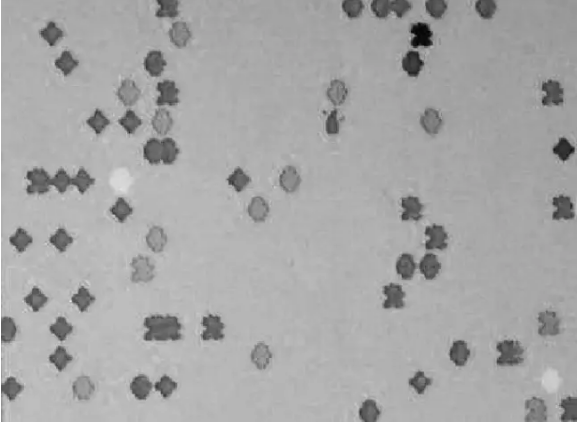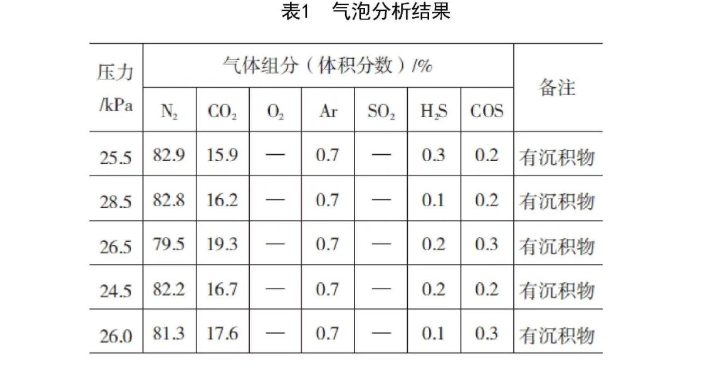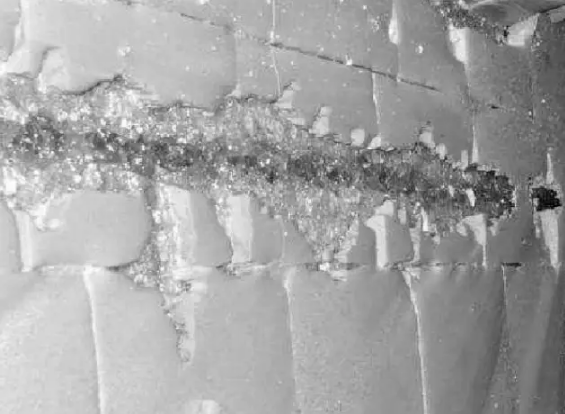The analyse and response of the refractory material bubbles in the ultra white glass’s process
Architectural and industrial glass
0.Introduction
The bubble is the common detect in the production of the glass, compared to the common glass, the ultra white glass is more easily show the bubble in the clarification zone. When product the ultra float glass, the mainly exist problem is the glass liquid have the difficult to clarify it. Because the ultra white glass’s iron content is lower, the thermal conductivity is higher, three or four times as much as the ordinary glass. It’s determine the ultra float glass have good heat permeability, the glass liquid’s temperature is higher and viscosity is lower, has strong convective strength in horizontal direction, Short residence time of the formed circulation in the clarification zone, and the residues bubble in the glass liquids not discharge in immediately. Because the iron’s content is lower, it’s determine the the vertical temperature gradient across the depth of the pool is significantly smaller than the float glass and the bottom of the pool’s temperature is lower than the common float glass about 6%. The temperature difference between the top and bottom of the glass liquid is relatively small, and the convection is reduced, which makes bubble discharge more difficult than ordinary float glass. On the other hand, the reflow glass liquid under the forming ring flow is rising in temperature in the process of advancing, so that the micro-bubbles that have been absorbed by the glass liquid are re-released into the glass liquid under the thermal-chemical effect. At the same time, the low iron glass liquid viscosity is low, micro-bubbles are very easy to rise to the surface flow, resulting in the forming flow of glass liquid bubbles rise significantly. Because of the good heat permeability of the ultra white glass, high temperature at the bottom of the pool, the horizontal direction convection intensity, the bottom of the pool, the pool wall refractory material erosion is serious, and easily to form the refractory material bubbles.
1.Bubble problem in the production of super white glass
A float glass production line, during the production of ordinary white glass, the melting quality is good and the production process is stable. After changing from ordinary white glass to ultra white glass production for a period of time, the quality of the glass plate tape gradually declined, the bubble defects gradually increased, and the yield was greatly affected. The air bubbles are irregularly distributed on the whole glass plate tape, and there is no obvious rule in the vertical distribution. The distribution of defects on the glass surface is shown in Figure 1, and the defects represented by the various symbols shown in the figure are all bubble defects after sampling and verification.

Fig. 1 Distribution of defects on glass panel
2.Bubble defect detection and source analysis
Randomly selected defective samples were found to be in the middle and lower part of the thickness direction of the glass plate, with bubble diameters ranging from 0.5 to 2.0mm, and there were inconspicuous deposits inside the bubbles.

The bubbles mainly contain N2, CO2 and Ar, etc. The volume ratio of N2 is 79%~83%, CO2 volume ratio is 15%~20%, and the volume ratio of Ar is 0.7%. From this, it can be judged that the generation of bubbles is related to the residual air released from the pores of the refractory material as a result of refractory material erosion.
The high content of N2 (79%~83%) in the bubbles of the defective samples, and the N2/Ar ratio consistent with that of ambient air, indicate air-related bubbles. Refractory pores usually contain air, and in refractories melted under restore condition, the O2 in the pores is converted to CO2 or a mixture of C02 and C0. Once the pores are opened, the O2 in the pores comes into contact with the glass melt and is preferentially absorbed by the restoring components in the glass melt. The gas bubble then contains a high concentration of N2 (possibly even up to 100%), 0 to 20% by volume of CO2, and about 1% by volume of Ar.
Bubbles with a diameter of 0.5 to 2.0 mm, low CO2 content (15% to 20%), and bubbles located in the middle and lower part of the glass plate thickness, indicate that the bubbles stayed in the kiln for a relatively short period of time, and it can be judged that the location of the bubble may be in the downstream of the hot spot area, the kiln's medium-high temperature or medium-temperature area, and it is most likely that the refractory erosion occurred in the clarification zone between the end of the neck to the neck of the card, which is a happen the part of the refractory material erosion. It is also possible that the liquid glass penetrated the gaps in the refractory and came into contact with the lower refractory, which is more prone to bubbles, generating a large number of bubbles. Fluctuations in temperature within the melting kiln, or changes in technical conditions such as changes in the flow of the liquid glass, may produce such bubbles. Ultra white glass’s feature is has strong convection in the horizontal direction, and the faster flow of glass liquid stream forms a strong reflow after encountering obstruction in the neck of the jam, which is a serious scouring of the refractory material.
According to the results of bubble analysis, combined with the actual operation of the kiln, it is judged that the bubble is generated in the clarification zone of the kiln, due to the erosion of the refractory material at the bottom of the kiln to produce bubbles, the bubbles from the bottom of the glass through the middle and lower glass liquids have been rising to the formation of the glass liquid flow, the temperature of the glass liquid is already relatively low in this area, the bubbles can not be discharged or absorbed by the glass liquid, and it will always remain in the glass liquid.
3.melting kiln process adjustment
3.1 Adjust the end of the melting kiln to the small furnace fuel consumption
Under the premise of ensuring the melting quality, appropriately reduce the temperature of glass liquid in the clarification zone. By reducing the end of the small furnace fuel consumption to reduce the temperature of the glass liquid downstream of the kiln, to achieve the purpose of reducing the temperature of the glass liquid at the bottom of the clarification zone of the melting kiln and reduce the fluidity of the glass liquid, slowing down the glass liquid on the bottom of the clarification zone of the refractory material erosion.
3.2 Reduce the thickness of the insulation layer at the bottom of the clarification zone of the kiln.
Will clarify the bottom of the outer layer of the bottom of the original use of calcium silicate board insulation layer removal, and auxiliary ventilation measures to reduce temperature, the surface temperature of the inner layer of refractory materials from 200 ℃ to 50 ℃, to achieve the purpose of reducing the temperature of the refractory materials in contact with the location of the glass liquid to reduce the temperature of the interface, reduce the mobility of the glass liquid, to slow down the glass liquid on the bottom of the clarification of the pool of the refractory materials erosion effect.
3.3 Replace the stuck neck water drum
The original use of the stuck neck water bag pressed into the depth of 340mm, replaced by the use of the card neck water drum pressed into the depth of 280mm, can reduce the kiln glass liquid reflow, reduce the temperature and flow rate at the interface between the glass liquid and refractory materials, slow down the glass liquid on the clarification of the bottom of the pool refractory erosion.
3.4 Adjustment results and verification
After a series of adjustments, the purpose of reducing the temperature at the bottom of the pool in the clarification zone of the kiln and reducing the fluidity of the glass liquid is achieved. The bubble defects in the glass liquid are gradually reduced, and the quality of the glass plate tape is gradually restored to the normal level, and can be maintained stable for a long time.
When the kiln was drained of glass water for cold repair after edge edge of the kiln, the internal inspection of the kiln found that the glass liquid at the end of the clarification zone had caused serious erosion to the bottom refractory material, and the AZS paving bricks at the bottom of the pool were partially eroded, and the glass liquid had already come into contact with the clay big bricks at the bottom of the pool. In the absence of adjustment measures, a large number of bubble defects will be generated, affecting the quality of the glass panel surface, confirming the analysis and judgement made at the time of the appearance of bubbles. The erosion of the refractory material at the bottom of the pool in the clarification zone of the melting kiln is shown in Figure 2

Figure 2 Photograph of the bottom of the clarification section after the glass water is released from the kiln
4. Conclusion
Due to the reduction of the iron content of super white glass, relative to ordinary white glass, in the melting process of thermal conductivity, viscosity will be very different, in the production process corresponds to the bottom of the pool will produce higher temperatures, glass mobility increased significantly and so on, the refractory erosion intensified, prone to refractory erosion bubbles.
In the design of the ultra white glass kiln, it is necessary to consider the parts where the glass liquid flow is stronger and the erosion is more serious, to optimize the design size, to use more resistant to scouring and erosion of the AZS fused cast brick refractory materials, and to consider lowering the heat preservation effect of these parts, to reduce the erosion of refractory materials in the process of operation, and to avoid the generation of air bubbles.
In the melting process, in order to achieve energy saving of the kiln, it is common to increase the press-in depth of the chuffing ladle and strengthen the heat preservation of the kiln, but these measures will affect the glass liquid reflow and convection, which will cause the local temperature of the melting kiln to rise, and increase the local erosion of the kiln refractory materials. In the process of super white glass production, it is necessary to comprehensively consider the balance of kiln energy saving, kiln protection and long-term melting quality stability in order to achieve the goal of long-term high-quality production. Our company, Henan Yuhua Fused Cast Refractory Co., Ltd. We are committed to the production of kiln refractory materials to ensure that the credibility of the business philosophy of quality first.
|


